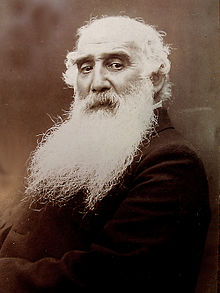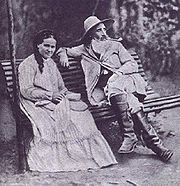|
Fontaine Art Studios
hand-painted reproductions on canvas
|
Direct Supplier with 179 Artists.
Stable Quality, Low Price, Fast Shipment.
|
|
Fontaine Art Studios
hand-painted reproductions on canvas
|
Direct Supplier with 179 Artists.
Stable Quality, Low Price, Fast Shipment.
|
 Camille PissarroCamille Pissarro (July 10, 1830 – November 13, 1903) was a French Impressionist painter. His importance resides not only in his visual contributions to Impressionism and Post-Impressionism, but also in his patriarchal standing among his colleagues, particularly Paul Cézanne and Paul Gauguin.Early life and work Jacob-Abraham-Camille Pissarro[1] was born at Charlotte Amalie (St. Thomas), Virgin Islands,[2] to Abraham Gabriel Pissarro, a Portuguese Sephardic Jew, and Rachel Manzano-Pomié, from the Dominican Republic. Pissarro lived in St. Thomas until age 12, when he went to a boarding school in Paris. He returned to St. Thomas where he drew in his free time. Pissarro was attracted to anarchism, an attraction that may have originated during his years in St. Thomas. In 1852, he traveled to Venezuela with the Danish artist Fritz Melbye. In 1855, Pissarro left for Paris, where he studied at various academic institutions (including the École des Beaux-Arts and Académie Suisse) and under a succession of masters such as Jean-Baptiste-Camille Corot, Gustave Courbet, and Charles-François Daubigny. Corot is sometimes considered Pissarro's most important early influence; Pissarro listed himself as Corot’s pupil in the catalogues to the 1864 and 1865 Paris Salons.[3] His finest early works (See Jalais Hill, Pontoise, Metropolitan Museum of Art, New York)[1] are characterized by a broadly painted (sometimes with palette knife) naturalism derived from Courbet, but with an incipient Impressionist palette. Pissarro married Julie Vellay, a maid in his mother's household. Of their eight children, one died at birth and one daughter died aged nine. The surviving children all painted, and Lucien, the oldest son, became a follower of William Morris.
The London yearsThe Franco-Prussian War of 1870–71 compelled Pissarro to flee his home in Louveciennes in September 1870; he returned in June 1871 to find that the house, and along with it many of his early paintings, had been destroyed by Prussian soldiers.[4] Initially his family was taken in by a fellow artist in Montfoucault, but by December 1870 they had taken refuge in London and settled at Westow Hill in Upper Norwood (today better known as Crystal Palace). A Blue Plaque now marks the site of the house on the building at 77a Westow Hill. Through the paintings Pissarro completed at this time, he records Sydenham and the Norwoods at a time when they were just recently connected by railways, but prior to the expansion of suburbia. One of the largest of these paintings is a view of St. Bartholomew's Church at Lawrie Park Avenue, commonly known as The Avenue, Sydenham, in the collection of the London National Gallery. Twelve oil paintings date from his stay in Upper Norwood and are listed and illustrated in the catalogue raisonné prepared jointly by his fifth child Ludovic-Rodolphe Pissarro and Lionello Venturi and published in 1939. These paintings include Norwood Under the Snow, and Lordship Lane Station,[5] views of The Crystal Palace relocated from Hyde Park, Dulwich College, Sydenham Hill, All Saints Church, and a lost painting of St. Stephen's Church. 
Whilst in Upper Norwood Pissarro was introduced to the art dealer Paul Durand-Ruel, who bought two of his 'London' paintings. Durand-Ruel subsequently became the most important art dealer of the new school of French Impressionism. Returning to France, in 1890 Pissarro again visited England and painted some ten scenes of central London. He came back again in 1892, painting in Kew Gardens and Kew Green, and also in 1897, when he produced several oils of Bedford Park, Chiswick. For more details of his British visits, see Nicholas Reed, "Camille Pissarro at Crystal Palace" and "Pissarro in West London", published by Lilburne Press.
Art and legacyKnown as the "Father of Impressionism",[6] Pissarro painted rural and urban French life, particularly landscapes in and around Pontoise, as well as scenes from Montmartre. His mature work displays an empathy for peasants and laborers, and sometimes evidences his radical political leanings. He was a mentor to Paul Cézanne and Paul Gauguin and his example inspired many younger artists, including Californian Impressionist Lucy Bacon. Pissarro's influence on his fellow Impressionists is probably still underestimated; not only did he offer substantial contributions to Impressionist theory, but he also managed to remain on friendly, mutually respectful terms with such difficult personalities as Edgar Degas, Cézanne and Gauguin. Pissarro exhibited at all eight of the Impressionist exhibitions. Moreover, whereas Monet was the most prolific and emblematic practitioner of the Impressionist style, Pissarro was nonetheless a primary developer of Impressionist technique. Pissarro experimented with Neo-Impressionist ideas between 1885 and 1890. Discontented with what he referred to as "romantic Impressionism," he investigated Pointillism which he called "scientific Impressionism" before returning to a purer Impressionism in the last decade of his life. In March 1893, in Paris, Gallery Durand-Ruel organized a major exhibition of 46 of Pissarro's works along with 55 others by Antonio de La Gandara. But while the critics acclaimed Gandara, their appraisal of Pissarro's art was less enthusiastic. Pissarro died in Paris on November 13, 1903 and was buried in Père Lachaise Cemetery.[2] On his tomb it reads November 12, 1903.[citation needed] During his lifetime, Camille Pissarro sold few of his paintings. By 2005, however, some of his works were selling in the range of U.S. $2 to 4 million.[7]
Descendants and familyCamille's great-grandson, Joachim Pissarro, is currently the Head Curator of Drawing and Painting at the Museum of Modern Art in New York City. His great-granddaughter, Lélia, is a successful painter and resides in London.[8] From the only daughter of Camille, - Jeanne Pissarro, other painters include Henri Bonin-Pissarro also known as BOPI (1918–2003) and Claude Bonin-Pissarro (born 1921), who is the father of Frédéric Bonin-Pissarro (born 1964).
Resources
Notes
Primary sources
Further reading
Critical Catalogue of PaintingsIn June 2006 publishers Skira/Wildenstein released Pissarro: Critical Catalogue of Paintings, compiled by Joachim Pissarro (descendant of the painter) and Claire Durand-Ruel Snollaerts (descendant of the French art dealer Paul Durand-Ruel). The 1,500-page, three-volume work is the most comprehensive collection of Pissarro paintings to date, and contains accompanying images of drawings and studies, as well as photographs of Pissarro and his family that have not previously been published. ISBN 8-876-24525-1 |
Copyright © 2006-2024 paintingswholesaler.com, All Rights Reserved.
EMAIL: paintingswholesaler@gmail.com